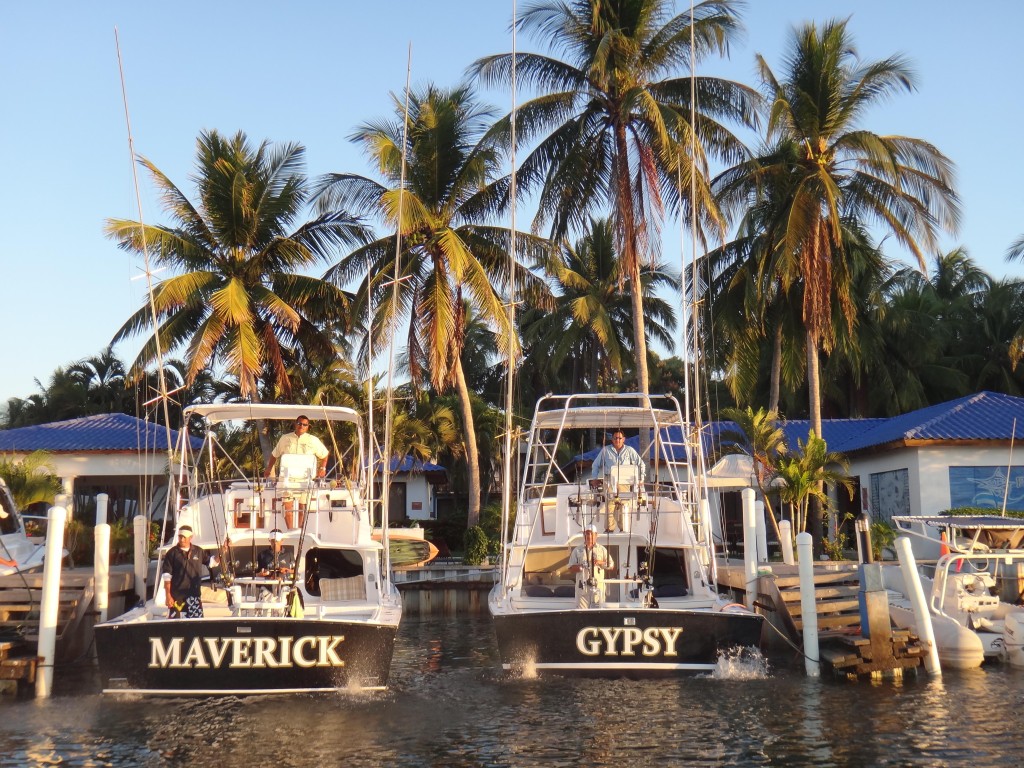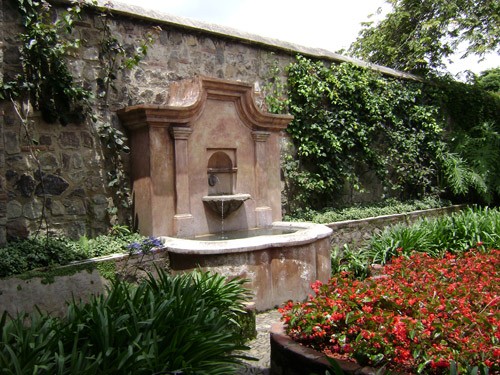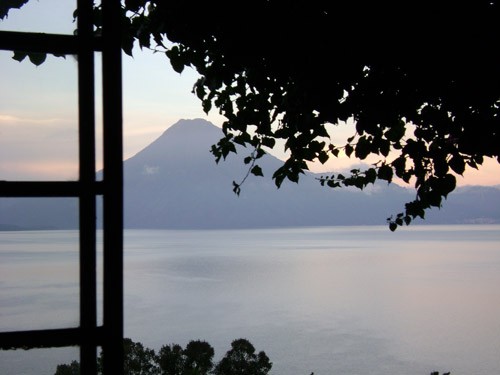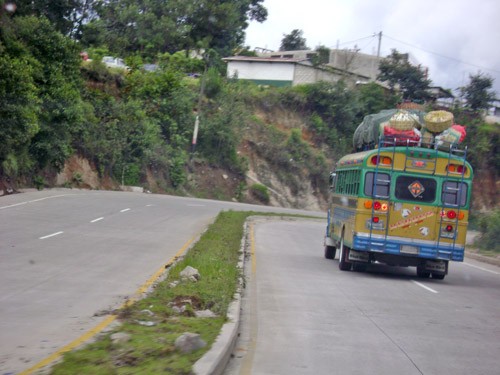I filled my itinerary with areas I have been wishing to see ever since my first visit to this beautiful country. The fishing memories of that trip are still vivid in my head! This time, my goal was not only to fish but also to visit the many wonders of Guatemala.
I landed in Guatemala City and was quickly off on a city tour. Being a rainy Sunday, traffic was light so I was able see more than I thought possible including colonial architecture side-by-side with modern buildings, many important museums and history monuments. So much to see! If you only have a day or an afternoon in Guatemala City, I can help you fill it.
There are two archeology museums here with one displaying a scale model of Tikal minus the overgrowth; an army museum with a great city view; Museum of the Popol Vuh which is home to one of the major Mayan art collections; the National Palace of Culture, a great achievement of Guatemalan architecture showing colonial mixed with French and neoclassic; the Greater Plaza of the Constitution at the heart of the Historic Center of the city; the Cultural National Place and museum; the Metropolitan Cathedral; the Portal of Commerce and Centenarian Park; and the Civic Center with buildings including the Supreme Court of Justice, Ministry of Public Finance, City Hall, Social Security and the Bank of Guatemala.
Too much architecture for you? Maybe you prefer shopping. Visit the Artisan Market or the Central Market for a large variety of fruits and vegetables as well as arts and handicrafts from all over the country including textiles, ceramics, leather, wood, and silver. Consider a stroll along Sixth Avenue that is open only to pedestrians.
If you have your family along, be sure to visit the National Zoo, the Botanical Garden, or the raised-relief map of Guatemala (approximately 1,809 meters of concrete and stone with a hydraulic system simulating the currents of the various watersheds of Guatemala). For a bit more excitement, start with a tour of the brewery which just celebrated its 125th year and then attend a football game (a.k.a. soccer) in the National Stadium. This would be at your own risk, of course, as we have all heard how passionate these people are about their national past-time.
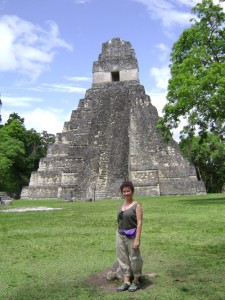 The next morning I flew to Flores to see some hotels in the Petén region as well as the remarkable Mayan ruins of Tikal. Truly awesome! I trekked the jungle paths that wind through Tikal and then climbed to the top of Pyramid IV and sat there silenced by the inexpressible. In the distance, impressively tall temples and pyramids towered above the jungle canopy. Amazingly, the Mayans engineered the temples and pyramids to line up precisely with each solstice of spring, summer, fall and winter. It is hard to grasp this engineering feat. Did they send out a scout to sit in that jungle and mark the sun’s exact spot on each solstice? How did they accomplish this 1,500 years ago? Continue with your imagination as you try to picture the Mayans building pyramids, altars, tombs, a Great Plaza and temples 20 stories high. It became a rich and powerful city-state of 100,000 people spread over 25 square miles with their own written language, calendars and mathematics. Its priests could predict eclipses, yet the city is now abandoned, swallowed up by the jungle.
The next morning I flew to Flores to see some hotels in the Petén region as well as the remarkable Mayan ruins of Tikal. Truly awesome! I trekked the jungle paths that wind through Tikal and then climbed to the top of Pyramid IV and sat there silenced by the inexpressible. In the distance, impressively tall temples and pyramids towered above the jungle canopy. Amazingly, the Mayans engineered the temples and pyramids to line up precisely with each solstice of spring, summer, fall and winter. It is hard to grasp this engineering feat. Did they send out a scout to sit in that jungle and mark the sun’s exact spot on each solstice? How did they accomplish this 1,500 years ago? Continue with your imagination as you try to picture the Mayans building pyramids, altars, tombs, a Great Plaza and temples 20 stories high. It became a rich and powerful city-state of 100,000 people spread over 25 square miles with their own written language, calendars and mathematics. Its priests could predict eclipses, yet the city is now abandoned, swallowed up by the jungle.
You must see Tikal. It is so hard to describe, I cannot do it justice. You can see it all in one day by flying in early morning and returning that evening or, better yet, enjoy an overnight on the shores of Lake Petén Itzá. La Lancha, one of the Coppola resorts, is a beautiful boutique hotel with casitas offering a panoramic view of this scenic lake. Other overnight options include an adventurous jungle lodge or a family resort all situated on Lake Petén Itzá. Your next trip to Guatemala must include Tikal.
The next day I returned to Guatemala City and was transferred to the stunning colonial city of Antigua, only 45 minutes away. Destroyed by an earthquake in 1773, Antigua rebuilt itself around the ruins of the Archbishop’s Palace and countless churches, convents, cathedrals, many built in the 1500’s in the Baroque style. It retains its characteristics as though time had stopped and, in 1979, was declared a UNESCO World Heritage Site for its immense historical and cultural value. There is no shortage of beautiful accommodations here all with inner courtyards overflowing with fountains, clay pots and lush gardens. Choose from boutique hotels to larger hotels and even a former monastery with 125 rooms – one more stunning than the other making your choice difficult.
When you feel a bit overwhelmed with all the history and museums, relax over lunch and a glass of wine in one of Antigua’s many wonderful restaurants. I enjoyed a casual, delicious lunch in the gardens of a restaurant where each table was surrounded by trellises, pomagranate trees, jasmine and canopies of flowers and vines all creating a private space. Once refreshed, you may choose to visit the art galleries or the many shops displaying the diverse talents of the people that include traditional textiles, ceramics, basketwork, musical instruments, gold or silver jewelry, ironwork and leather. You could easily spend several days in this city known also for its eternal spring weather and still not see everything. There is truly something for everyone. Be sure to wear comfortable shoes since the streets are cobblestoned.
From Antigua, I went to some of the surrounding villages for a textile tour and a market visit where local produce including several varieties of corn, beans, fruit, various vegetables, meats, as well as prepared foods were being sold to the local villagers. The vendors included women skillfully making fresh tortillas, fried pork rind (yes like in the US but fresh!), as well as an American favorite, shaved ice topped with their homemade real fruit syrups. Preparations were being made for Corpus Christi as they hung yellow and white ribbons across the streets. Each town is named after a Saint whose birthday is duly celebrated with a festival. You can easily find a festival on any given day.
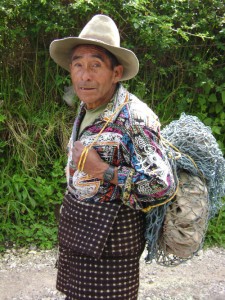 I continued to the highlands of Lake Atitlan, a 2-½ hour drive along roads hugging the mountainsides, through valleys, gullies, canyons and plateaus. It is a varied landscape where communication between communities has been difficult creating diverse ethnic groups. I saw plenty of small parcels of land where the vegetables and basic grains for almost the entire country are grown due to the abundant rain and fertile soils. Some of the most intensive agriculture in the world is practiced here much based on night condensation irrigation.
I continued to the highlands of Lake Atitlan, a 2-½ hour drive along roads hugging the mountainsides, through valleys, gullies, canyons and plateaus. It is a varied landscape where communication between communities has been difficult creating diverse ethnic groups. I saw plenty of small parcels of land where the vegetables and basic grains for almost the entire country are grown due to the abundant rain and fertile soils. Some of the most intensive agriculture in the world is practiced here much based on night condensation irrigation.
This journey was as special as the destination. We went through beautiful highland villages with Sololá being my favorite where many older men still wear the traditional dress. My textile tour came in handy as I was able to identify some villages simply by the textiles they wore. There are more than 325 color scheme and style variations each with its own symbolic meaning. I toured two lakeside hotels and stayed at the luxurious La Casa Palopo which has eight bedrooms with inviting balconies that overlook Lake Atitlan and its three volcanoes. San Pedro is the oldest of the three and stopped erupting about 40,000 years ago. Tolimán began growing after San Pedro stopped erupting and remains active, although it has not erupted in historic times. Atitlán has grown almost entirely in the last 10,000 years and remains active, with its most recent eruption in 1853.
Lake Atitlan is renowned as one of the most beautiful lakes in the world. Even Aldous Huxley famously described it, “Lake Como, it seems to me, touches on the limit of permissibly picturesque, but Atitlán is Como with additional embellishments of several immense volcanoes. It really is too much of a good thing.” Because there is no road that circles the lake, the seven main villages, each with its own language and handicraft, are reached by boat or roads from the mountains that may have brief extensions along the shore. This area is worth a visit on its own for the history and culture of the many villages but note the lake is 50 square miles and 340 meters deep (1,120 feet), thus, expect to only cover a few villages each day. If you prefer an active vacation, you can hike up one of its volcanoes or enjoy a mountain biking expedition. For the fishermen in you, the lake holds black bass introduced back in 1958.
The next day I traveled to Chichicastenango, a highlands village situated on the mountaintop at an altitude of 1,965 meters. It is one of the most colorful markets, famous for its handicrafts. This market is visited not only by tourists but also by villagers from the surrounding areas and countries. I saw everything from fruit, vegetables, livestock such as ducks and chickens, handicrafts, musical instruments, textiles, bags of white, yellow, black and red corn, baskets, jade jewelry, parts for the weaver’s looms, incense for the offerings, to basic supplies. A visit to Chichi is not complete without a visit to the Santo Tomas Church, a 400-year-old church where the Catholic faith is practiced as well as shaman rituals. Not only do they offer incense, flowers, but also alcohol to their gods.
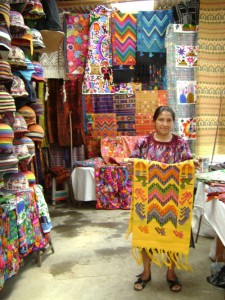 From here, I returned to Antigua to overnight at the Meson Panza Verde, a luxury boutique hotel selected as a Fodor’s Choice Establishments in 2010. Each of the nine suites has a large bathroom, fireplace and an outside garden or terrace. The restaurant is considered the best in town. I took some time to walk around Antigua to see if I could get my bearings. Very few streets are marked, so when giving directions, locals use landmarks and the Central Plaza as a marker similar to Central Park in NYC. Fortunately the streets are well laid out in a grid pattern and during the day, the three volcanoes are helpful with Agua Volcano to the south of the city and Acatenango and Fuego to the west.
From here, I returned to Antigua to overnight at the Meson Panza Verde, a luxury boutique hotel selected as a Fodor’s Choice Establishments in 2010. Each of the nine suites has a large bathroom, fireplace and an outside garden or terrace. The restaurant is considered the best in town. I took some time to walk around Antigua to see if I could get my bearings. Very few streets are marked, so when giving directions, locals use landmarks and the Central Plaza as a marker similar to Central Park in NYC. Fortunately the streets are well laid out in a grid pattern and during the day, the three volcanoes are helpful with Agua Volcano to the south of the city and Acatenango and Fuego to the west.
My last day was spent on the Pacific coast offshore fishing with Pacific Fins Resort. Niels Erichsen runs a tight operation with a professional and very competent staff on the boats and at the lodge. The two-bedroom villas are spacious and the poolside restaurant serves from an à la carte menu filled with delicious, fresh items. It was a hard choice between whole snapper or grilled mahi mahi for me, however, if you tire of fresh fish, you can enjoy a prime steak but save room for dessert. Second helpings, alcohol and beverages are all included.
I loved the convenience of having breakfast and boarding the boat right at the resort. We started our journey out to the sea passing turtles and a pod of about 500 spinner dolphins which put on an aerial show for us. Tuna you ask? Yes but we were not so lucky, however, another boat was. Guatemala was having a dorado tournament and I soon realized why. We managed to catch 22 dorados and released four sailfish of nine raised. For lunch, we had fresh mahi-mahi sashimi as well as fried mahi-mahi. All in all, not a bad day, and as I always say, a day out fishing beats a day in the office.
July, 2012: Lastly, safety is not an issue. Some clients have expressed that concern, but I felt very comfortable traveling solo throughout this remarkable country. Frankly, the only possible safety issue may be riding on a chicken bus but don’t expect that to be part of your trip! I will gladly return to Guatemala at my first opportunity.
By: Line Bouthillette




